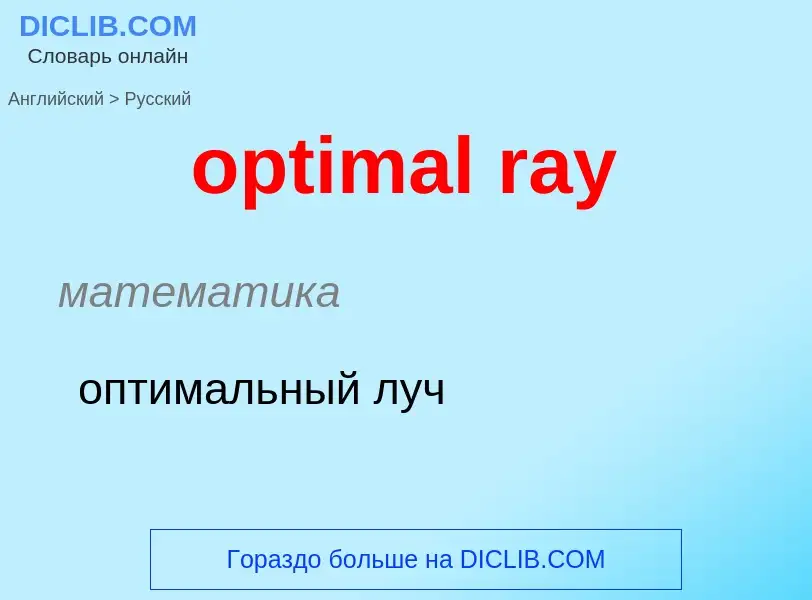Перевод и анализ слов искусственным интеллектом ChatGPT
На этой странице Вы можете получить подробный анализ слова или словосочетания, произведенный с помощью лучшей на сегодняшний день технологии искусственного интеллекта:
- как употребляется слово
- частота употребления
- используется оно чаще в устной или письменной речи
- варианты перевода слова
- примеры употребления (несколько фраз с переводом)
- этимология
optimal ray - перевод на русский
математика
оптимальный луч
математика
оптимальный эксперимент
математика
оптимальная остановка
общая лексика
анодные лучи
математика
положительный луч
общая лексика
рентгеноструктурный анализ
строительное дело
рентгенографический дифракционный анализ (грунта)
Википедия
In mathematics, the theory of optimal stopping or early stopping is concerned with the problem of choosing a time to take a particular action, in order to maximise an expected reward or minimise an expected cost. Optimal stopping problems can be found in areas of statistics, economics, and mathematical finance (related to the pricing of American options). A key example of an optimal stopping problem is the secretary problem. Optimal stopping problems can often be written in the form of a Bellman equation, and are therefore often solved using dynamic programming.







![tetrahedrally]] and held together by single [[covalent bond]]s, making it strong in all directions. By contrast, graphite is composed of stacked sheets. Within the sheet, the bonding is covalent and has hexagonal symmetry, but there are no covalent bonds between the sheets, making graphite easy to cleave into flakes. tetrahedrally]] and held together by single [[covalent bond]]s, making it strong in all directions. By contrast, graphite is composed of stacked sheets. Within the sheet, the bonding is covalent and has hexagonal symmetry, but there are no covalent bonds between the sheets, making graphite easy to cleave into flakes.](https://commons.wikimedia.org/wiki/Special:FilePath/Diamond and graphite2.jpg?width=200)


![backbone]] from its N-terminus to its C-terminus. backbone]] from its N-terminus to its C-terminus.](https://commons.wikimedia.org/wiki/Special:FilePath/Myoglobin.png?width=200)
![Rocknest]]", October 17, 2012).<ref name="NASA-20121030" /> Rocknest]]", October 17, 2012).<ref name="NASA-20121030" />](https://commons.wikimedia.org/wiki/Special:FilePath/PIA16217-MarsCuriosityRover-1stXRayView-20121017.jpg?width=200)
![A protein crystal seen under a [[microscope]]. Crystals used in X-ray crystallography may be smaller than a millimeter across. A protein crystal seen under a [[microscope]]. Crystals used in X-ray crystallography may be smaller than a millimeter across.](https://commons.wikimedia.org/wiki/Special:FilePath/Protein crystal.jpg?width=200)


